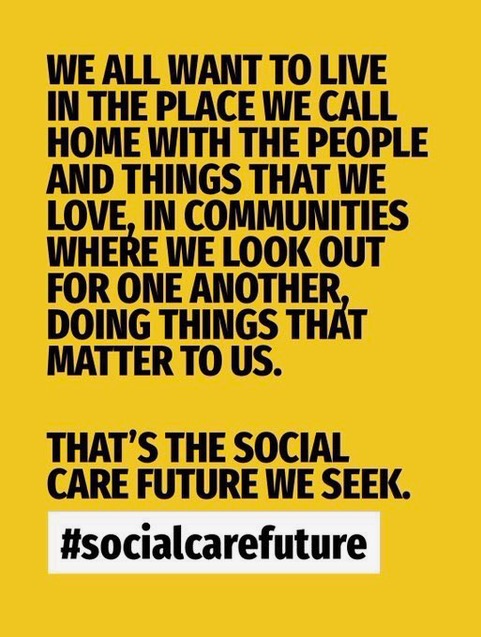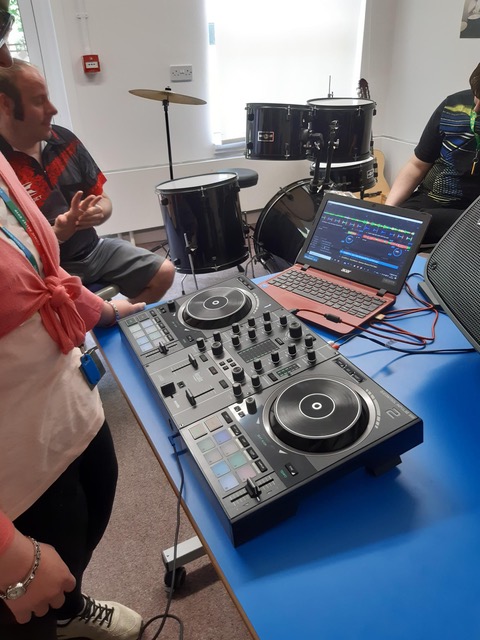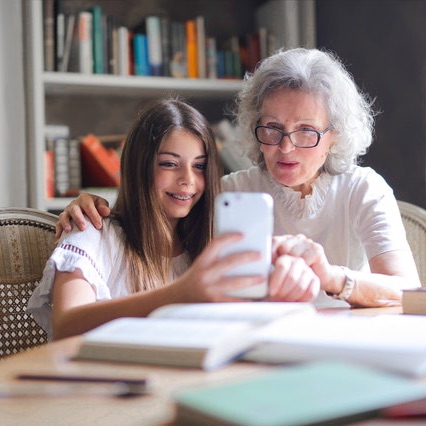Written by Max Neill
There has been lots of discussion in the press and online recently about how people become lonely and socially isolated and about the devastating impact this has on them. In this blog I’d like to think about the various ways that people connect.
There are many ways of connecting people with their communities. None of these methods stands on its own. Each strengthens the possibilities presented by the other methods. Better connected communities are stronger, healthier and more resilient communities. People who are well connected in good networks of social relationships live longer, healthier and happier lives, so thinking about how communities can be connected is useful for all of us.
Community Circles are a connecting method in themselves, but the everyday thinking and work of circles will also inevitably involve members in trying out lots of other methods of building connections. I would argue that any comprehensive list of connecting methods must contain at least the following 8 components:
- Family:
 Our families are probably the most fundamental way we connect with the community, and they are by far the single largest provider of care to elderly and disabled people. Despite this family carers are too often undervalued and disrespected. Often they are not adequately supported. Circles involve family members because of their vast accumulated knowledge of the person, and because of their love for and commitment to the person. Some circles have helped people reconnect with extended family members who previously felt unequipped to be part of their lives, to the benefit of all involved. We know that for all kinds of reasons people can lose touch with or become totally disconnected with their families. In these circumstances, other methods of connecting gain in importance.
Our families are probably the most fundamental way we connect with the community, and they are by far the single largest provider of care to elderly and disabled people. Despite this family carers are too often undervalued and disrespected. Often they are not adequately supported. Circles involve family members because of their vast accumulated knowledge of the person, and because of their love for and commitment to the person. Some circles have helped people reconnect with extended family members who previously felt unequipped to be part of their lives, to the benefit of all involved. We know that for all kinds of reasons people can lose touch with or become totally disconnected with their families. In these circumstances, other methods of connecting gain in importance.
- Work and learning: Our work and our learning brings us into contact with a wide variety of people. Sometimes we spend longer with the people we work with than with our own families. Helping people to obtain and succeed in work, start their own business venture, and/or pursue courses of study that interest the person can be key reasons to form a circle. Good employers value the fact that their employees form social networks that go beyond the immediate work task as these increase the health and happiness of their workforce. Some employers with strong social responsibility policies encourage their staff to spend a few hours every month engaging in some kind of community contribution. One really good way to do this would be as circle facilitators or as circle members.
- Groups, Clubs, Societies, Faith Groups and Campaigns: These all contribute enormously to community life and community wellbeing. Apart from those few poisonous groups set up with the intention of spreading hatred against other sections of the community, all the diverse organisations that make up our ‘civil society’ add something to the life of our communities. Circles seek ways that the person at their centre can express their gifts through local groups and clubs, and have even helped get groups started where none such exist.
- Traditional Volunteering: Tried and tested, a very successful way in which people contribute their gifts and skills to the community. Enabling a person to be a volunteer can be a great way that a circle can help them move toward their full potential.
- MicroVolunteering/Neighbourliness: In the last few years we’ve seen a myriad of ways in which people are being encouraged to share their gifts and time with their community in a less formal manner than traditional volunteering. This includes initiatives like Timebanking and schemes that encourage people to be good neighbours. There is so much potential to involve and inspire people with these new approaches. There are lots of ideas here that circle members might want to try out.
- Connecting Events: These are ways of bringing people together so that they can form their own connections, think and develop action together. Circles and groups of circles could use the practical and organisational skills that they bring together for all kinds of parties, conferences, celebrations, fundraisers and campaigning events, providing connecting opportunities to large numbers of people.
 Social Media: People who love using social media like facebook and twitter are a huge untapped community asset. These people can be part of forming a communication network within and between the circles they are part of, and also with local community groups. They can share information and ideas back and forward between the digital world and the real world. Community Circles is keen to support facilitators and other circle members through our Groupsite, our blog, our facebook and twitter accounts. Every time a new person joins our social networking community, they contribute a whole new set of gifts, ideas and energies to it.
Social Media: People who love using social media like facebook and twitter are a huge untapped community asset. These people can be part of forming a communication network within and between the circles they are part of, and also with local community groups. They can share information and ideas back and forward between the digital world and the real world. Community Circles is keen to support facilitators and other circle members through our Groupsite, our blog, our facebook and twitter accounts. Every time a new person joins our social networking community, they contribute a whole new set of gifts, ideas and energies to it.
- Community Circles: The Eighth strategy is of course circles themselves. Bring people together around a person to think and act in a way that helps that person build a life that makes sense to them, that enables them to live to their fullest potential. Good circles will explore all the various methods of connecting listed above (and maybe discover a few more of their own). We would love to hear your stories and experiences about how you have used these (and other) methods of helping people build new connections in their community, stories of challenge and difficulty as well as stories of success. Circles are one part of the massive interweaving networks of human interconnection and interdependence that support and sustain us all to live good lives, love and work.






